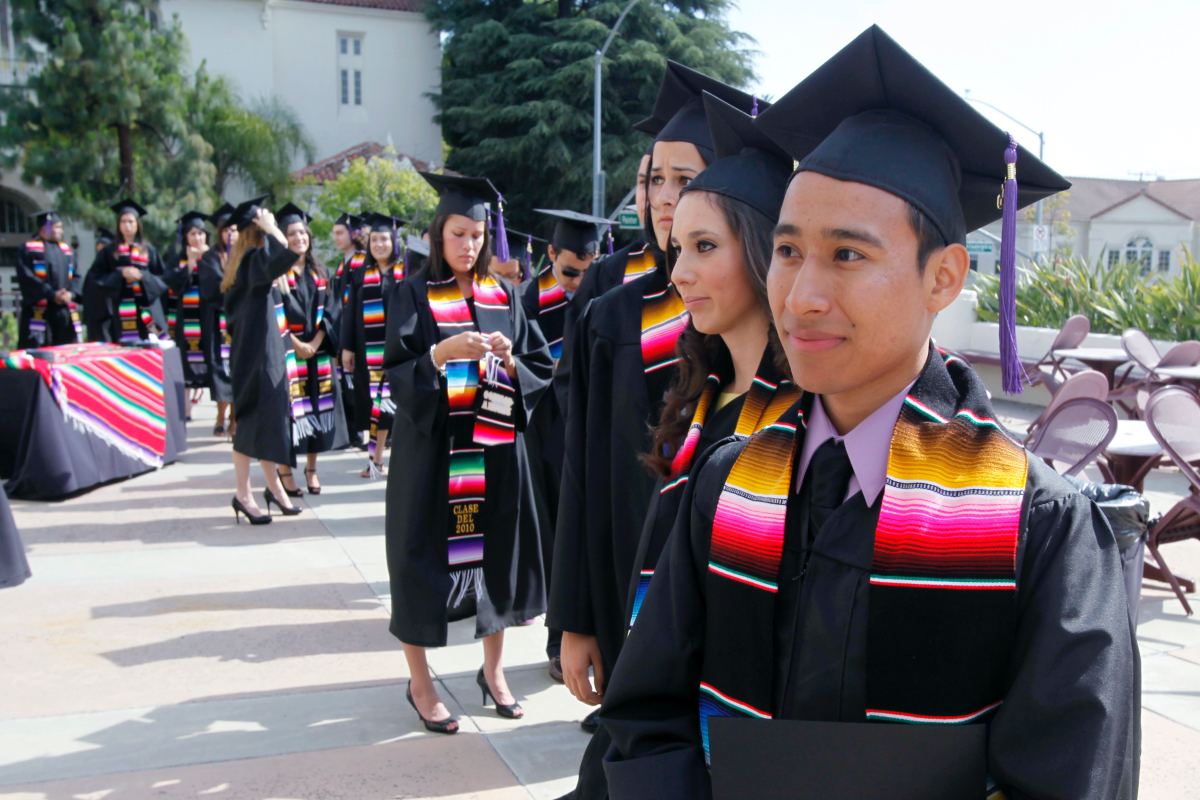

AP Photo/Reed Saxon
About two years ago, California State University, Los Angeles (Cal State LA) shut down. As COVID-19 spread around the world, I rushed to campus and collected books, office supplies, and everything I needed for a few weeks of remote work. The weeks quickly became months, entire semesters, and full academic years. Meanwhile, I became a Zoom expert, a remote educator detached from the physical space that had defined my work experience and teaching practice.
The campus reopened for a few face-to-face classes in Fall 2021. I planned to teach in-person on January 24, but the Omnicom variant forced us to teach virtually for the first three weeks of the semester. We waited. And, on February 14, we came back.
The return has been bittersweet. No banner welcomed us, no hugs, no outdoor event to meet and discuss moving forward. There are few instructions besides reminders to upload proof of vaccination and wear a mask. The atmosphere is grim, reinforced by the portable restrooms scattered throughout the campus that promise to keep us safe from crowds.
Cal State LA is a large public university in Los Angeles. Squeezed between highways and overseeing the San Gabriel Valley, the campus lies on the traditional territory of the Chumash, Tongva, and Kizh peoples. Today, there are about 26,000 students, and most of them are the first ones in their families to access higher education.
Cal State LA is a minority-serving institution, a working-class and immigrant community, and an urban commuter campus—and now, a community devastated by the pandemic and its economic and social consequences, along with draconian anti-immigration laws.
It is no secret that COVID-19 had a disproportionate impact on low-income and racialized communities, but many of these scars are invisible. There are few safe spaces on campus to talk about what has happened in the last two years. I look at my students. How many of them have lost a loved one and had to say goodbye through a screen? Are they suffering undiagnosed long COVID?
Many students have mentioned that they cannot focus on the readings, are too distracted, or have too many things on their plate. Many are unmotivated. But there is no way to know because we do not talk and we are already moving into the next assignment, the next reading, or the next discussion thread.
For the last two years, remote teaching has defined our relationship with students and the university community. If “remote” means to be situated far from campus, it also entails a feeling of disconnection and distance.
During these pandemic years, faculty members learned about online and remote education and adapted their teaching practices to the new scenario. Like many of my colleagues, I attended countless workshops, completed online credential programs, and read through advertisements for teaching software. It was frustrating. These instances provided few opportunities to engage in critical pedagogy and were more about how to remain effective instructors in online platforms.
So much of the discussion focused on how we continue to grade, test, and assess students’ learning in an online context and stay in control of the class and students’ bodies. So we forced them to sit and turn their cameras on, do timed quizzes, and access learning materials in an orderly fashion. If online education could have opened non-linear and open spaces for learning and interaction, we were advised to build walls and draw predictable paths.
Many of these practices are here to stay. Some have argued that they accommodate a diverse student body and professors’ desires for a more flexible work schedule. But in many cases, there are makeshifts to cover real problems.
A female student told me that she preferred online night classes because she was afraid to walk alone. Other students mentioned the increasing costs of commuting to campus or the difficulties of taking time off from work. These reasons do not reflect a preference for online education but the economic disparities and structural violence that affect Cal State LA students.
More than ever, students need a caring, nurturing, and flexible learning environment, a place where they can reconnect with friends and peers and regain their love for learning. But being a caring professor has become a privilege. The vast majority of CSU instructors are contingent faculty, teaching five courses and working in several institutions to make means end. Being flexible with assignments and deadlines is often an extra burden that they can barely afford. Contingent and untenured faculty have less freedom to redesign their classes and are under enormous pressure to deliver measurable outcomes.
After two years of remote education, our campus community needs time to pause and reimagine our broken system. We need a system that offers job stability and work protections and benefits to all faculty members and staff so that they can focus on students. We also need to rethink university spaces, rebuild relations, and design safe spaces where we can meet, talk, and laugh.
More than ever, we need to reimagine a pedagogy from the ground up and build a democratic learning space that responds to students’ multiple interests, incorporates the diversity of knowledge and intellectual traditions, and fights all forms of oppression.
***
Ángela Vergara is a professor of history at California State University, Los Angeles, where she has been a faculty member since 2006. She obtained her BA in history at the Pontificia Universidad Católica de Chile in Santiago, Chile in 1994 and her Ph.D. at the University of California San Diego in 2002. Before moving to Los Angeles, she taught at the University of Texas Panamerican in the Rio Grande Valley, Texas.



no banners or hugs welcomed us?